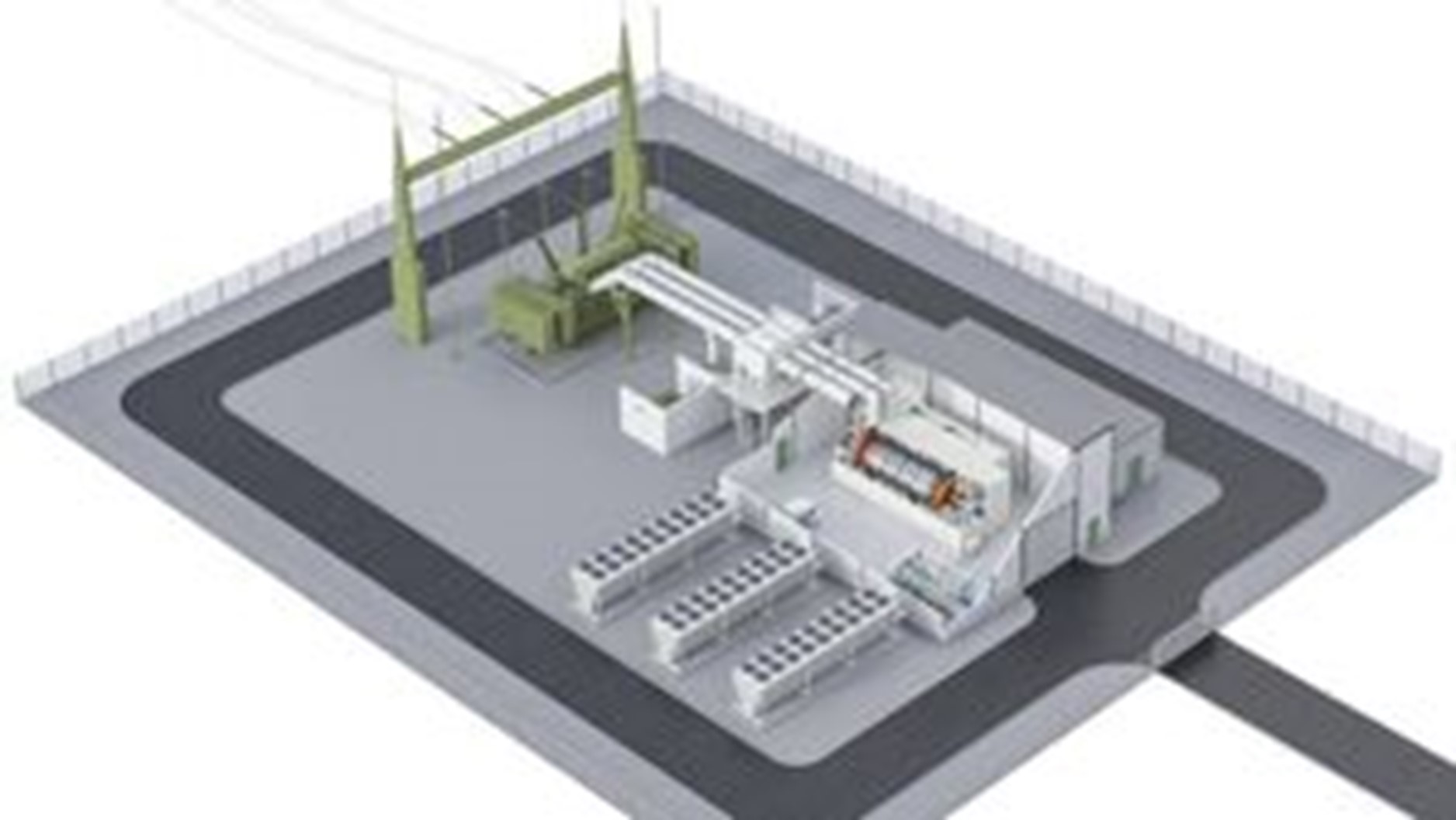Work on €50m energy project at Moneypoint to begin within weeks
Share
The project, which involves fitting an energy stabiliser, is the first phase of the multi-billion euro Green Atlantic development at the Co. Clare power station

A 3D image of the synchronous compensator which will be constructed at Monkeypoint generating station as part of the ESB's multi-billion euro Green Atlantic development. The compensator will be the first in the country.
Work on a new state-of-the-art energy stabiliser will begin in Moneypoint Generating Station in the coming weeks.
The €50m synchronous compensator is a key aspect of the ESB’s multi-billion Euro Green Atlantic development.
The new compensator will be the first in the country and will incorporate the world’s largest flywheel used for grid stability.
Due to the intermittency of wind energy, grid stabilisation technologies have an increasingly important role in a successful energy transition.
The synchronous compensator will enable the management of the transmission system safely and securely with a reduced dispatch of fossil fuel plant under constraints and reduced costs of transmission operations.
In a statement, the ESB stated it is pleased to bring forward the Moneypoint synchronous compensator with flywheel as a cost-effective and zero-carbon solution in strengthening the stability and resilience of the Irish grid.
An ESB spokeswoman confirmed manufacturing of the main electrical and mechanical components commenced earlier this year, works on site will commence this month, and installation of the main equipment will take place in April 2022.
Commissioning of the new plant is planned for mid-2022 and commercial operation in October 2022.
Green energy hub
As part of ESB’s plan to transform Moneypoint into a green energy hub, it is investing almost €50m in pioneering technology that will help Ireland’s renewable energy ambitions.
The construction of the synchronous compensator will enable higher volumes of renewables on the grid. Siemens Energy has been awarded the contract to carry out the construction and engineering works for the technology.
Synchronous compensators are electrical devices that are used to manage the stability of the national grid including the relationship between voltage and current and the resilience of the system to sudden faults. Though a synchronous compensator does not generate electricity, it is essentially a large electric motor that is connected in a particular manner to allow it to act as a support to the system when required.
This allows the system operator, such as EirGrid in the Republic of Ireland, to manage the transmission system safely and securely with a reduced dispatch. As a result, this enables reduced carbon impact of transmission operations and reduced constraint costs.
The development at Moneypoint incorporates a large flywheel rotor - a heavy, rotating weight c.130t in a casing rotating under vacuum conditions to reduce friction losses that is, in turn, attached to the shaft of the motor.
This weight acts as a physical stabiliser on the system to automatically compensate for sudden short-term changes in the system.
If a fault occurs on the electricity network, the synchronous compensator counters its impact by allowing system protection for vital fractions of a second which enables generators on the system to respond – this is known as providing inertia.
The ESB has also announced plans to develop a new floating offshore wind farm of 1,400MW off the coast of Clare as part of a multi-billion euro transformation of Moneypoint Power Station into a green energy renewables hub.
Once complete, the wind farm will be capable of powering more than 1.6 million homes in Ireland. Subject to the appropriate consents being granted, the wind farm is expected to be in production within the next decade.
Floating wind turbines
Moneypoint will also become a centre for the construction and assembly of floating wind turbines. A deep-water port already exists at the site, making it an ideal staging ground for the construction of the wind farm.
It is expected this will generate a significant number of direct jobs in the Mid-West region. In the longer term, the development of Moneypoint will support wider plans for Shannon Foynes port, and working with local stakeholders, help make the Shannon Estuary a focal point for the offshore wind industry in Europe.
ESB’s plans include investment in a green hydrogen production, storage and generation facility at Moneypoint towards the end of the decade. A clean, zero-carbon fuel, green hydrogen will be produced from renewable energy and used for power generation, heavy goods vehicles in the transport sector and to help decarbonise a wide range of industries such as pharmaceuticals, electronics and cement manufacturing.